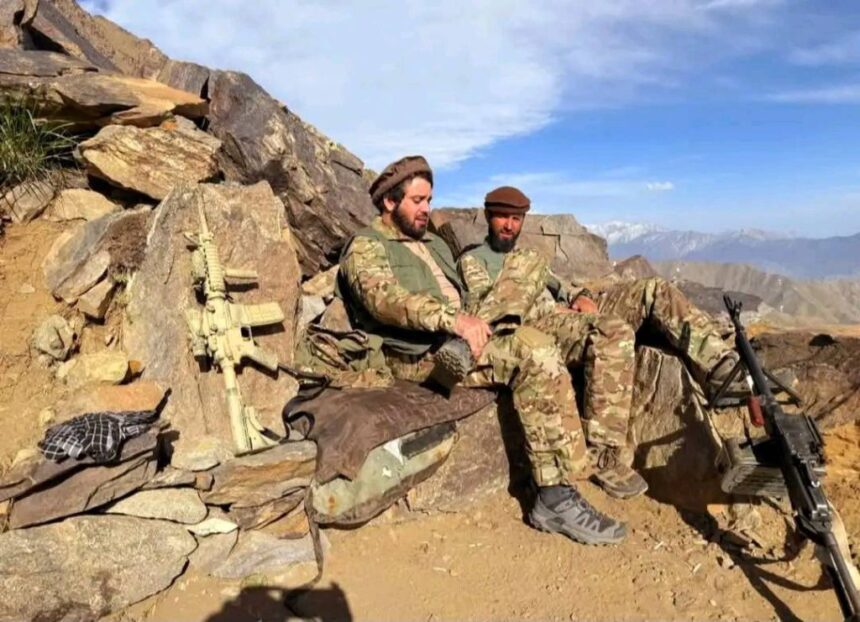RASC News Agency: Commanders of the National Resistance Front (NRF) have released compelling new images and video footage of themselves conducting military preparations in the rugged mountains of Panjshir, once again highlighting the resilience of anti-Taliban forces in Afghanistan. The visuals feature two prominent NRF figures Khalid Amiri and Hasib Panjshiri armed with assault rifles and tactical gear, signaling that armed opposition to Taliban rule remains both active and strategically coordinated. The footage was widely circulated on social media and swiftly embraced by supporters of the resistance movement as well as critics of the Taliban regime. The imagery raw, resolute, and unmistakably defiant has rekindled hope among Afghanistanis weary of the Taliban’s oppressive rule and ongoing human rights violations.
In response, Taliban-linked propaganda accounts attempted to dismiss the footage as fabricated or outdated. However, their denials appeared desperate and unconvincing, consistent with the group’s long-standing strategy of censorship, misinformation, and narrative manipulation. Social media users and observers familiar with the geography of Panjshir quickly refuted these claims, interpreting the footage as authentic proof of continued resistance against Taliban authority.cSimultaneously, unverified reports emerged of an explosion at one of the Taliban’s military installations in Panjshir, intensifying speculation about the resurgence of guerrilla operations in the province. Though the Taliban insists that it maintains full control over Panjshir, the recurrence of such incidents severely undermines those claims and exposes the regime’s growing vulnerabilities.
Panjshir, once the epicenter of Afghanistan’s anti-Soviet and anti-Taliban resistance under the legendary Ahmad Shah Massoud, has never fully surrendered to extremist rule. Under his son Ahmad Massoud, the National Resistance Front has become a symbol of defiance challenging the Taliban’s brutal policies, ethnic repression, and medieval interpretations of Islam. Since the Taliban’s violent return to power in August 2021, Panjshir has remained a thorn in their side a province whose mountainous terrain and proud legacy of rebellion have frustrated Taliban attempts at total domination. Unlike the Taliban’s heavily controlled urban centers, Panjshir continues to demonstrate that military resistance is not only possible but alive.
The reappearance of NRF commanders in the field, juxtaposed with renewed violence in the province, has once again drawn national and international attention to the fragility of the Taliban’s grip on power. Despite claiming to have brought “stability,” the Taliban has failed to secure peace, governance, or legitimacy. Their rule is characterized not by unity but by coercion, persecution, and fear. As the NRF mobilizes once more, the Taliban is reminded that its monopoly on power is far from absolute. In the mountains of Panjshir, resistance endures not as a memory, but as a living force against tyranny.






